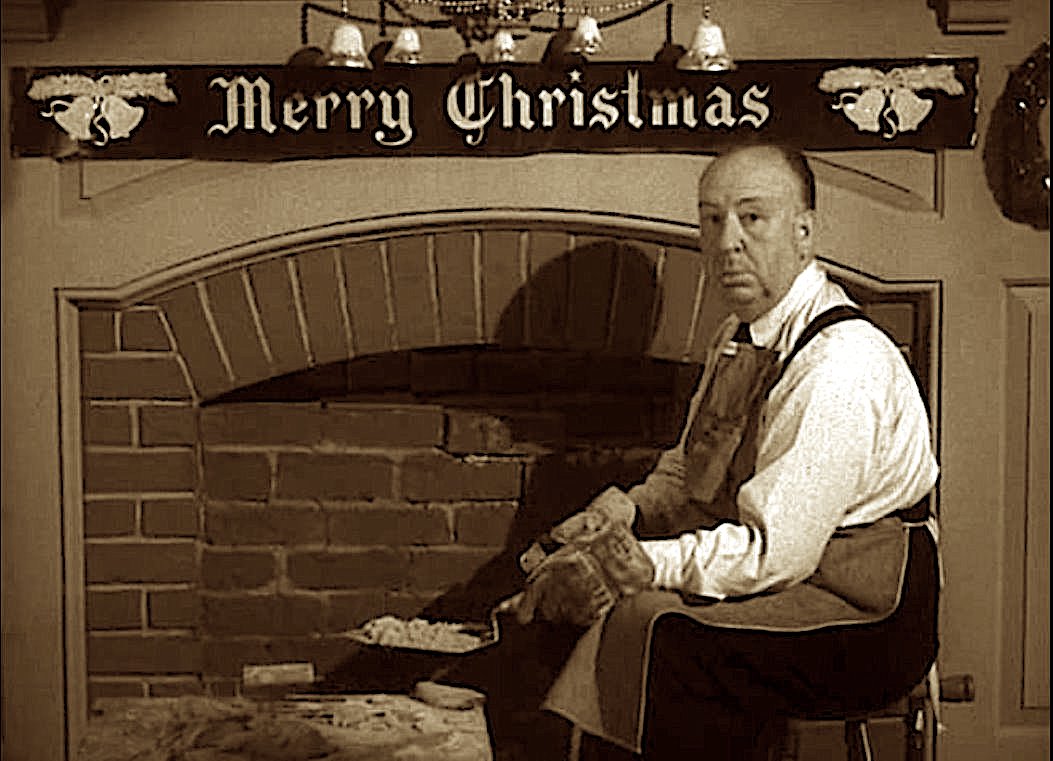
IN THIS ISSUE
CHRISTMAS IN THE BRONX
By John Mariani
NEW YORK CORNER
THE BEST NEW RESTAURANTS IN NYC IN 2022
By John Mariani
ANOTHER VERMEER
CHAPTER Forty-Nine
By John Mariani
NOTES FROM THE WINE CELLAR
WINES FOR CHRISTMAS
By John Mariani
❖❖❖
 episode will also be archived at: almostgolden.
episode will also be archived at: almostgolden.
❖❖❖
A CHILD'S CHRISTMAS
IN THE BRONX
By John Mariani
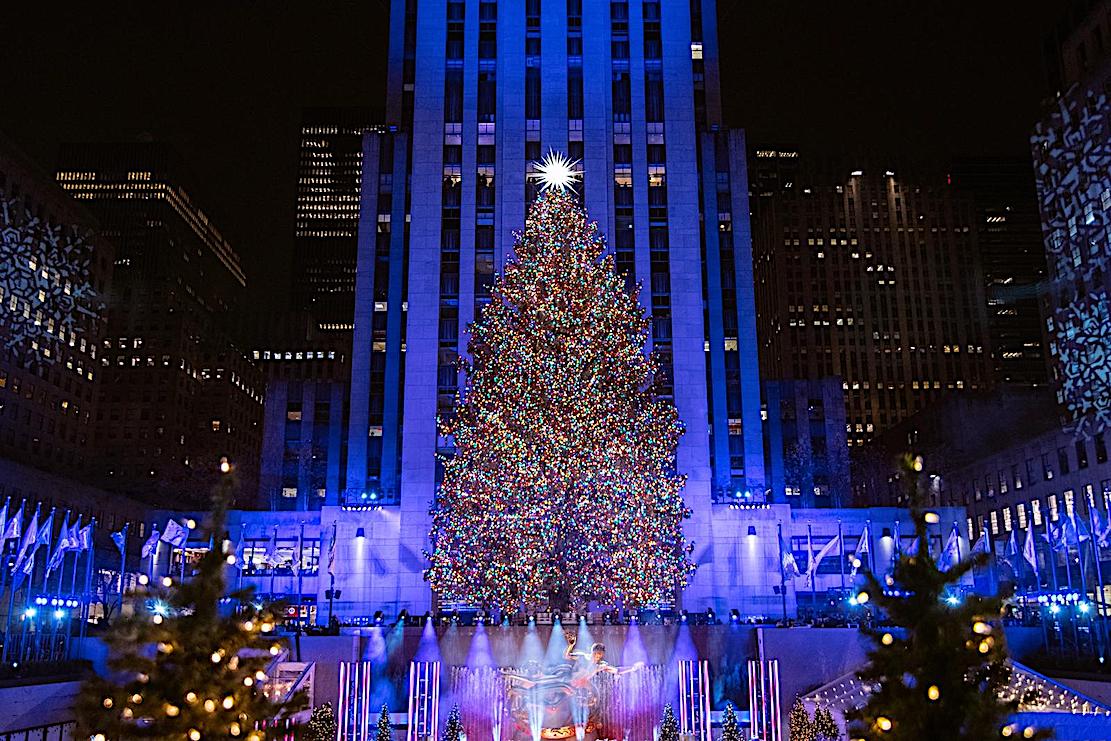
Note: It's become something of a
tradition for me to republish this memoir each year
in Mariani's Virtual Gourmet, which is in
the book Almost Golden I co-wrote with my
older brother Robert and originally an article in
the New York Times.
 Maybe it didn't snow for
Christmas every year in the Bronx back in the '50s.
But my memory of at least one perfect snow-bound
Christmas Eve makes me think it did often enough
that I still picture my neighborhood as white as
Finland in those days when I lived along the choppy
waters of the Long Island Sound.
Maybe it didn't snow for
Christmas every year in the Bronx back in the '50s.
But my memory of at least one perfect snow-bound
Christmas Eve makes me think it did often enough
that I still picture my neighborhood as white as
Finland in those days when I lived along the choppy
waters of the Long Island Sound.
But for all the decorations and the visits to
stores, the Bronx Zoo. Radio City Music Hall and the
Rockefeller Center skating rink, it was the
sumptuous Christmas feasts that helped maintain our
families' links to the Old Country long after most
other immigrant traditions had faded away. Food was
always central to everyone's thoughts at Christmas,
and the best cooks in each family were renowned for
specific dishes no one else dared make.
The assumption that everything would be exactly the
same as last year was as comforting as knowing
that Christmas Day would follow Christmas Eve. The finest ancestral linens were
ironed and smoothed into place, dishes of hard candy
were set out on every table, and the kitchen ovens
hissed and warmed our homes for days. The
reappearance of the old dishes, the irresistible
aromas, tastes and textures, even the seating of
family members in the same spot at the table year
after year anchored us to a time and a place that
was already changing more rapidly than we could
understand.
The finest ancestral linens were
ironed and smoothed into place, dishes of hard candy
were set out on every table, and the kitchen ovens
hissed and warmed our homes for days. The
reappearance of the old dishes, the irresistible
aromas, tastes and textures, even the seating of
family members in the same spot at the table year
after year anchored us to a time and a place that
was already changing more rapidly than we could
understand.
It's funny now to think that my memories of the food
and the dinners are so much more intense than those
of toys and games I received, but that seems true of
most people. The exact taste of Christmas cookies,
the sound of beef roasting in its pan, and the smell
of evergreen mixed with the scent of cinnamon and
cloves and lemon in hot cider were like holy incense
in church, unforgettable, like the way you
remember your parents' faces when they were young.
unforgettable, like the way you
remember your parents' faces when they were young.
No one in our neighborhood was poor, but few were
rich. Yet we mounted feasts as lavish as any I
could imagine in a book, and in the days preceding
Christmas people took enormous joy in spending their
money on foods only eaten during that season.
It was still a time when the vegetable man would
sell his produce from an old truck on Campbell
Drive, and Dugan's and Krug's bread men came right
to your door with special holiday cupcakes and
cookies. We'd go to Biancardi's Meats on
Arthur Avenue and, while the butcher on Middletown
Road usually carried fresh fish only on Fridays, he
was always well stocked with cod, salmon, lobsters
and eel during the holidays. The pastry shops
worked overtime to bake special Christmas breads and
cakes, which would be gently wrapped in a swaddling
of very soft pink tissue paper tied up with ribbons
and sometimes even sealed with wax to deter anyone
from opening it before Christmas.
By Christmas Eve the stores ran out of everything,
and pity the poor cook who delayed buying her
chestnuts, ricotta cheese, or fresh yeast until it
was too late. Weeks in advance the women would put
in their order at the live poultry market for a
female rabbit—not a male—or a goose that had to
weigh exactly twelve pounds.
You always knew
what people were cooking for Christmas because the
aromas hung in the hallways of the garden apartments
and the foyers of their homes—garlicky tomato
sauces, roast turkeys, rich shellfish stews, and the
sweet, warm smells of pastries and breads could make
you dizzy with hunger. When you went out into
the cold, those aromas would slip out the door and
mingle with the biting sea-salted air and the fresh
wet snow swept in off the Sound.
At
the Italian homes in the Bronx ancient culinary
rituals were followed long after they'd lost their
original religious symbolism. The traditional
meatless meal of Christmas Eve—“La Vigilia" (below)—which
began centuries ago as a form of penitential
purification, developed into a robust meal of seven
exotic seafood dishes that left one reeling from the
table. According to the traditions of
Abruzzo, where my father's family came from,
the Christmas Eve dinner should be composed of seven
or nine dishes—mystical numbers commemorating the
seven sacraments and the Holy Trinity multiplied by
three.
This
was always my Auntie Rose's shining moment. She
would cook with the zeal and energy of a dozen nuns,
beginning with little morsels of crisply fried
calamari. She made spaghetti on a stringed
utensil called a "ghitarra" and served it with a
sauce teeming with shellfish. Next came an
enormous pot of lobster fra diavolo—a
powerful coalescence of tomato, garlic, onion,
saffron and hot red peppers, all spooned into soup
plates around shiny, scarlet-red lobsters that some
guests attacked with unbridled gusto while others
took their dainty time extracting every morsel of
meat from the deepest recesses of the body, claws
and legs.
Few
children would eat baccala, a strong-smelling salted
cod cooked for hours in order to restore its
leathery flesh to edibility, and stewed eel, an
age-old symbol of renewal, was a delicacy favored
mostly by the old-timers. But everyone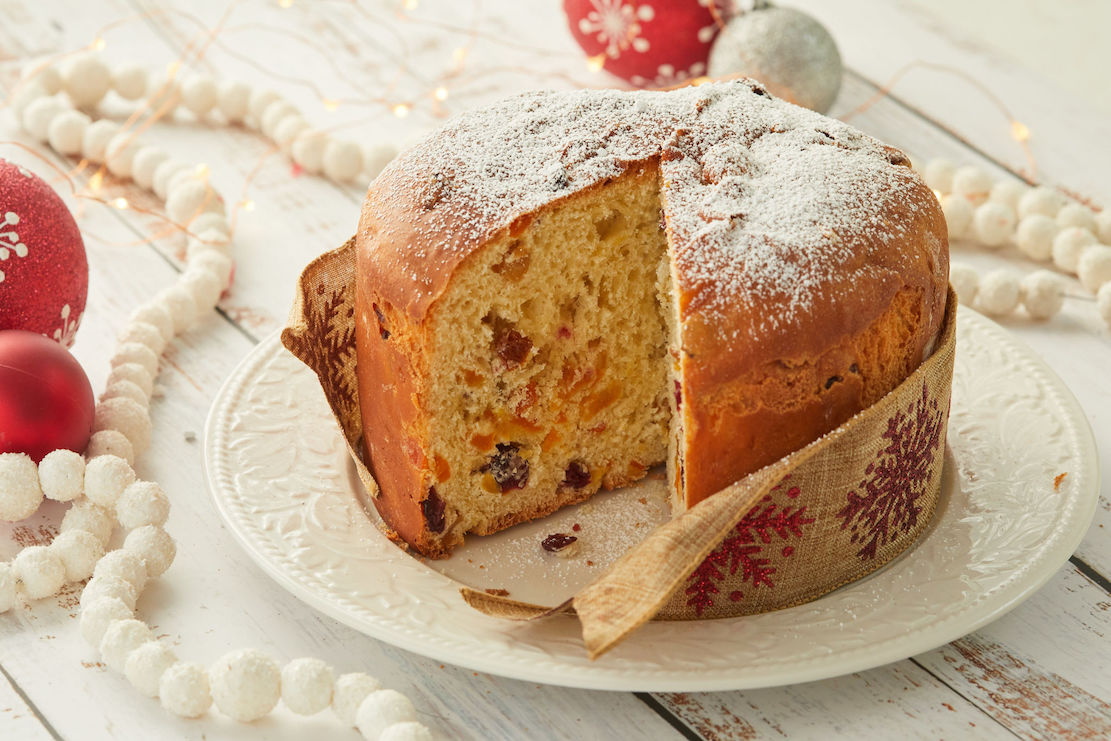 waited for the dessert—the yeasty,
egg bread called "panettone," shaped like a church dome
and riddled with golden raisins and candied fruit.
waited for the dessert—the yeasty,
egg bread called "panettone," shaped like a church dome
and riddled with golden raisins and candied fruit.
Christmas Day
came too early for everyone but the children.But as
soon as presents were exchanged, my mother and
grandmother would begin work on the lavish Christmas
dinner to be served that afternoon. It was always a
mix of regional Italian dishes and American
novelties, like the incredibly rich, bourbon-laced
egg nog my father insisted on serving before my
grandmother's lasagna, in which were hidden dozens
of meatballs the size of hazelnuts.
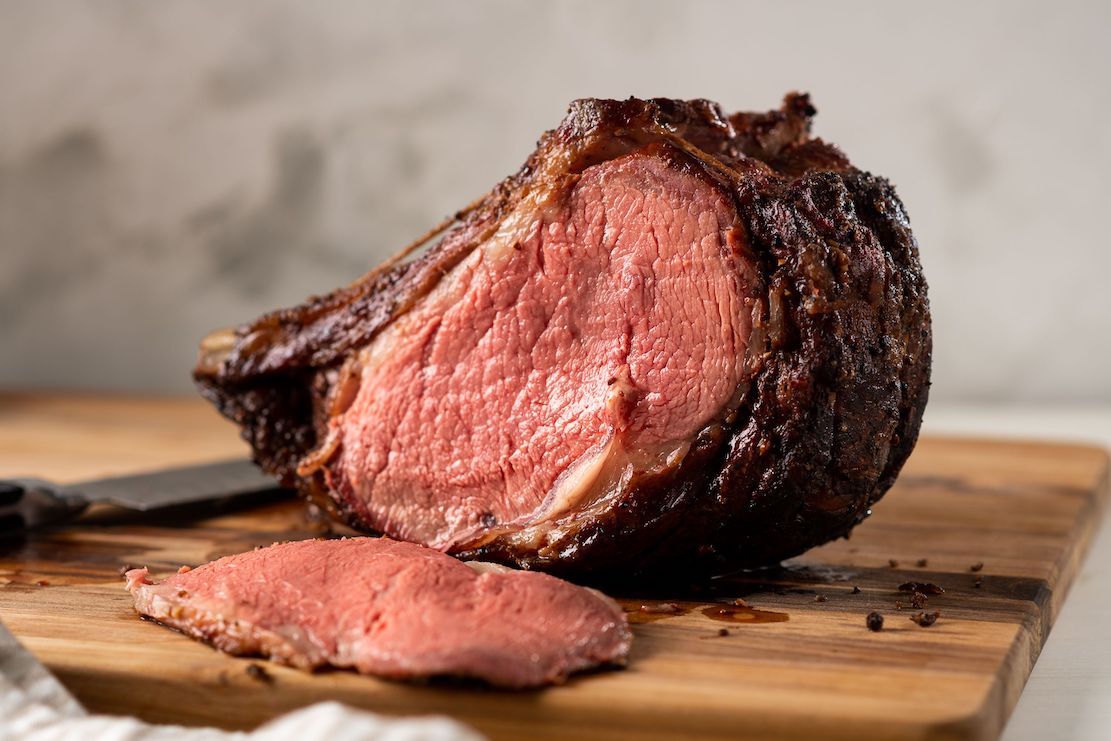 Then
my mother would set down a massive roast beef,
brown and crackling on the outside, red as a
poinsettia within, surrounded by sizzling roast
potatoes and Yorkshire pudding glistening from the
fat absorbed from the beef. Dessert reverted
to venerable Italian tradition with my grandmother's
prune-and-chocolate-filled pastries and honeyed
cookies called struffoli (below).
And someone always brought panforte,
an intensely rich, thick Sienese fruit and nut cake
no one could eat more than a sliver of.
Then
my mother would set down a massive roast beef,
brown and crackling on the outside, red as a
poinsettia within, surrounded by sizzling roast
potatoes and Yorkshire pudding glistening from the
fat absorbed from the beef. Dessert reverted
to venerable Italian tradition with my grandmother's
prune-and-chocolate-filled pastries and honeyed
cookies called struffoli (below).
And someone always brought panforte,
an intensely rich, thick Sienese fruit and nut cake
no one could eat more than a sliver of.
After
such a meal, we needed to go for a walk in the cold
air. In other homes up and down our block people
were feasting on Norwegian lutefisk, Swedish
meatballs, German stollen, Irish plum pudding and
American gingerbread. If you stopped and listened
for a moment, you could hear the families singing
carols in their native tongue.
By early evening guests got ready to leave and
leftovers were packed up to take home, belying
everyone's protest that they wouldn't eat for days
afterwards.
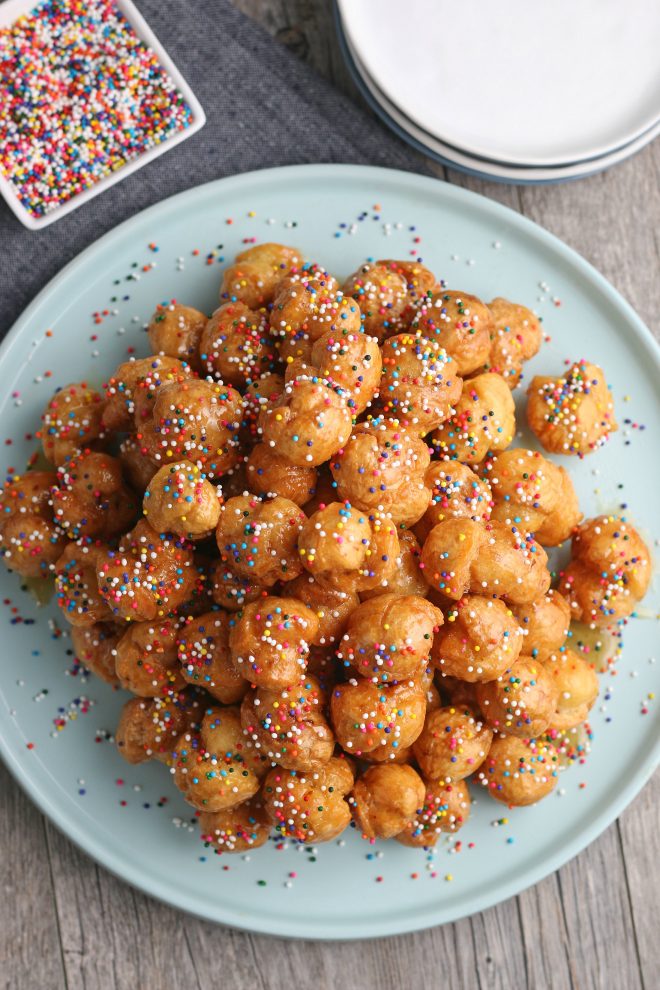 By then the snow
had taken on an icy veneer and the wind died down to
a whisper. I remember how the cold air
magnified sounds far, far away, so as I crept into
bed I could hear the waves lapping the sea wall and
the rattling clack-clack, clack-clack of the El
running from Buhre Avenue to Middletown Road. It was
a kind of lullaby in those days, when it never
failed to snow on Christmas in the Bronx.
By then the snow
had taken on an icy veneer and the wind died down to
a whisper. I remember how the cold air
magnified sounds far, far away, so as I crept into
bed I could hear the waves lapping the sea wall and
the rattling clack-clack, clack-clack of the El
running from Buhre Avenue to Middletown Road. It was
a kind of lullaby in those days, when it never
failed to snow on Christmas in the Bronx.
❖❖❖
THE BEST NEW RESTAURANTS OF 2022
By John Mariani

The
re-opening of so many restaurants
post-pandemic in New York was thrilling
enough, but the addition of so many
wonderful new restaurants of every type—more
than 300 of them—is testament to the city’s
indomitable spirit. Over this past year I’ve
eaten at restaurants of every stripe and
every price range in every borough (well,
not Staten Island) that compare with the
best ever opened in New York. Here is a list
of my favorites, in random order.
Fasano
280 Park Avenue
646-869-5400
Fasano hails from Brazil and the owners
took over the (second) Four Seasons restaurant
with a
far more romantic flourish, with marble,
exquisite new furniture, spacious
tables
and antiques. There’s a soigné bar and a
3-course lunch of seasonal specials. The
impeccably attired staff, led by director
Charles Masson (formerly at La Grenouille),
provides good reasons for women to don their
finery. The refined Italian cuisine offers
marvelous pastas and risottos. Upstairs on
weekends there's jazz and bossa nova.
Parma
Nuova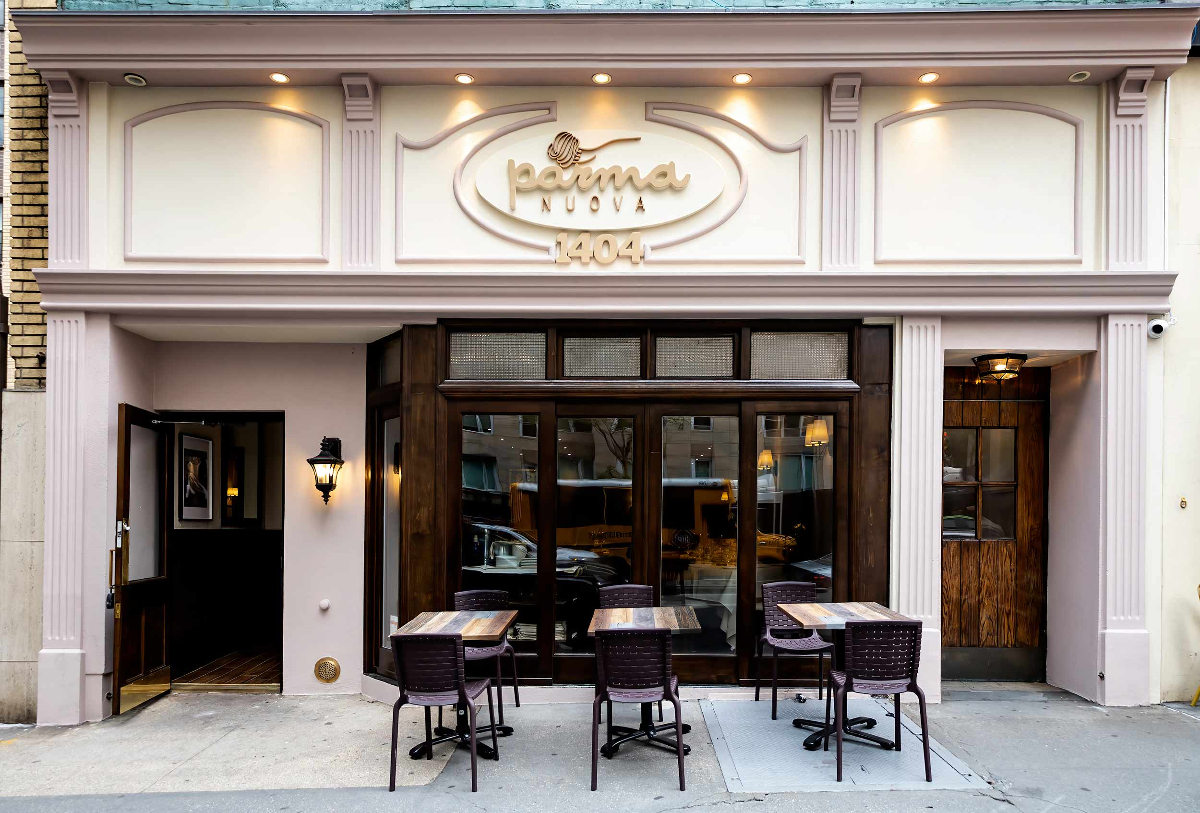
1404 3rd Avenue
212-535-3520
The
former
premises of Parma and the old menus have been
transformed into a beautiful, well-lighted
dining room where the specialties are from the
cooking of Parma, under chef Pino Coladonato,
including culatello ham and truffled
pecorino served with hot tavolaccio
di Parma con gnocco fritto (fried puffs
of yeasty dough). Parma
Nuova also has an outstanding, creamy, sweet
eggplant Parmigiana style, great pastas and
perfect veal alla
milanese with greens. Also it has a
first-rate Italian wine list.
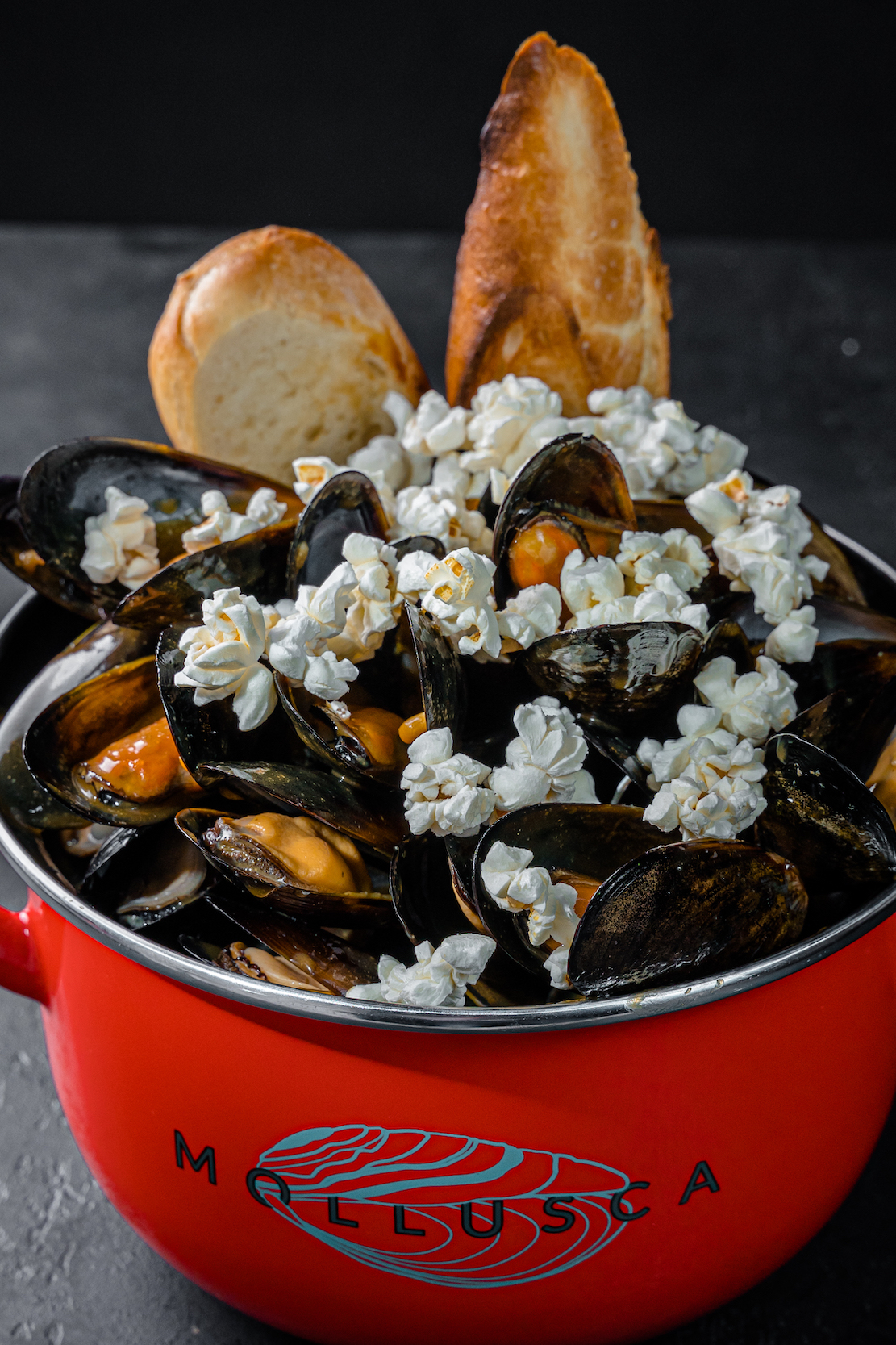 Mollusca
Mollusca
1
Little West 12th Street
929-837-0360
A sleek and shadowy dining room in the
Meat Packing District with a taupe marble
cocktail bar, hand-blown glass chandeliers
resembling jellyfish and buttery soft leather
and velvet seating. There
are plenty of mussel dishes as well as superb
hamachi
ceviche with pickled jalapeño, wasabi
mayo and guacamole; branzino crudo
with a yuzu
dressing with a hint of truffle and tri-color
tobiko
eggs; and tataki
of wagyu, uni, fresh truffle, ponzu aïoli and
gold leaves.
Baazi %20by%20Evan%20Sung.jpg)
2588
Broadway
646-861-3859
Gaurav
Anand
has opened a slew of restaurants in New Delhi
and Goa, and
he gives New York a stunning two-floor
restaurant with the best Indian cuisine in the
Upper West Side. The bar is a smart place to
meet. The food is beyond the usual, with
surprises like koliwada
Mumbai cod with a salty and crispy okra and
tartar sauce, while shrimp balcho
is a Goan dish of pan-seared prawn with a very spicy, hot
chili pickle.
Photo by van Sung
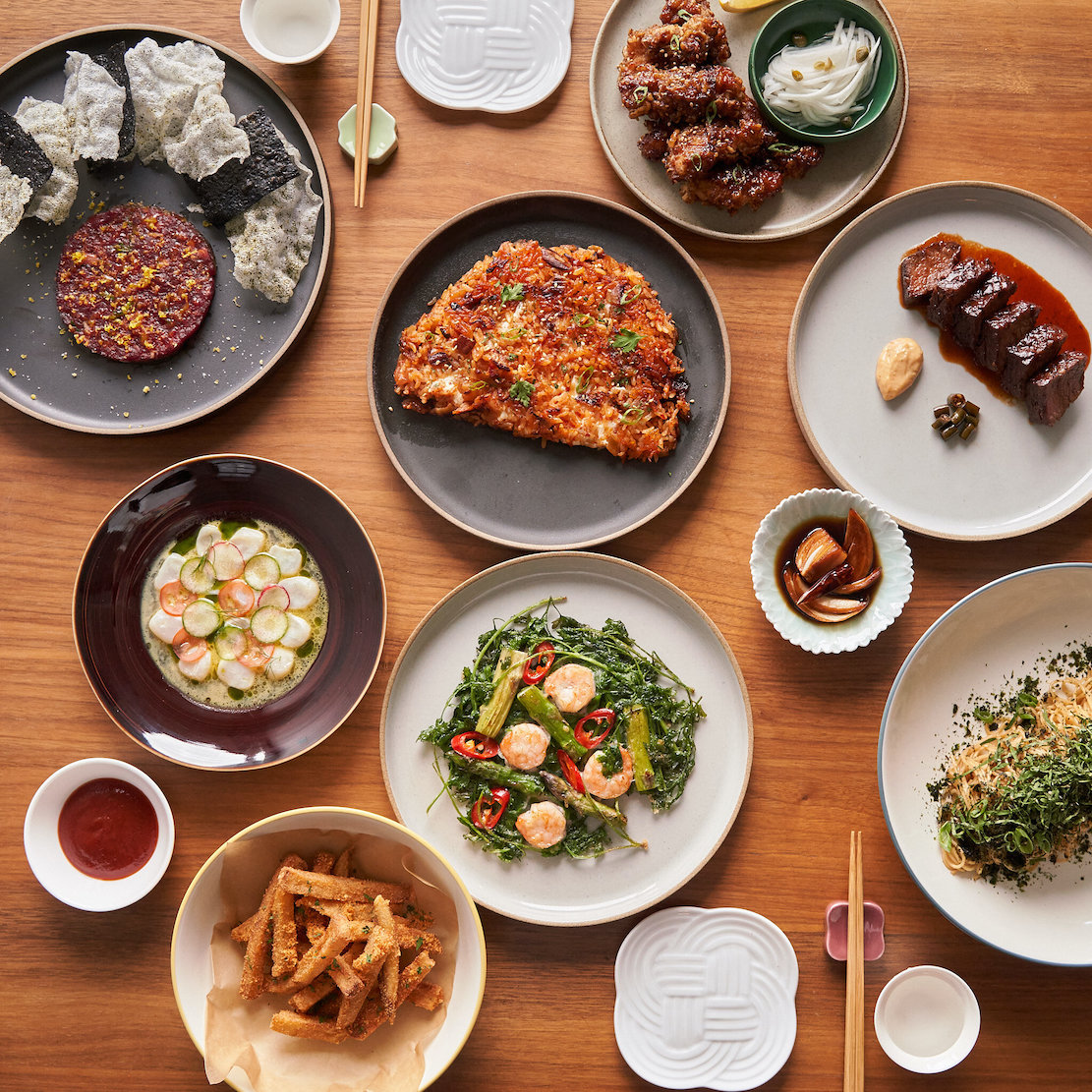 8282
8282
84 Stanton Street
929-837-0360
8282 really is a labor of love because
chef Bong Le Jo (formerly at Perry Street and
Dovetail) is partnered with his fiancée, Jee
Kim (previous owner of Pado). The number in
its name refers to South Korea’s country code,
+82, as well as a get-it-done phrase that
means “quickly.” Their intent is to modernize
Korean food with global elements. Have
the banju, and
the dakgalbi
kimchi-bap of marinated, stir-fried
chicken morsels over kimchi rice laced with
cheese and gochujang chili paste.
La
Devozione
428 West 16th Street
646-720-0215
Tucked
away
in Chelsea Market, La Devozione is as close to
a true Italian trattoria as you’ll find in New
York, with nonpareil pastas cooked impeccably
in perfect, simple sauces, like
“lollipop” macaroni mac-and-cheese; fusillata
with mint and basil; and linguine with
anchovies. There is also a pasta
counter available for a tasting of many
items. The décor is wonderfully cozy
with a dazzle in the way pastas and tins are
lighted and displayed.
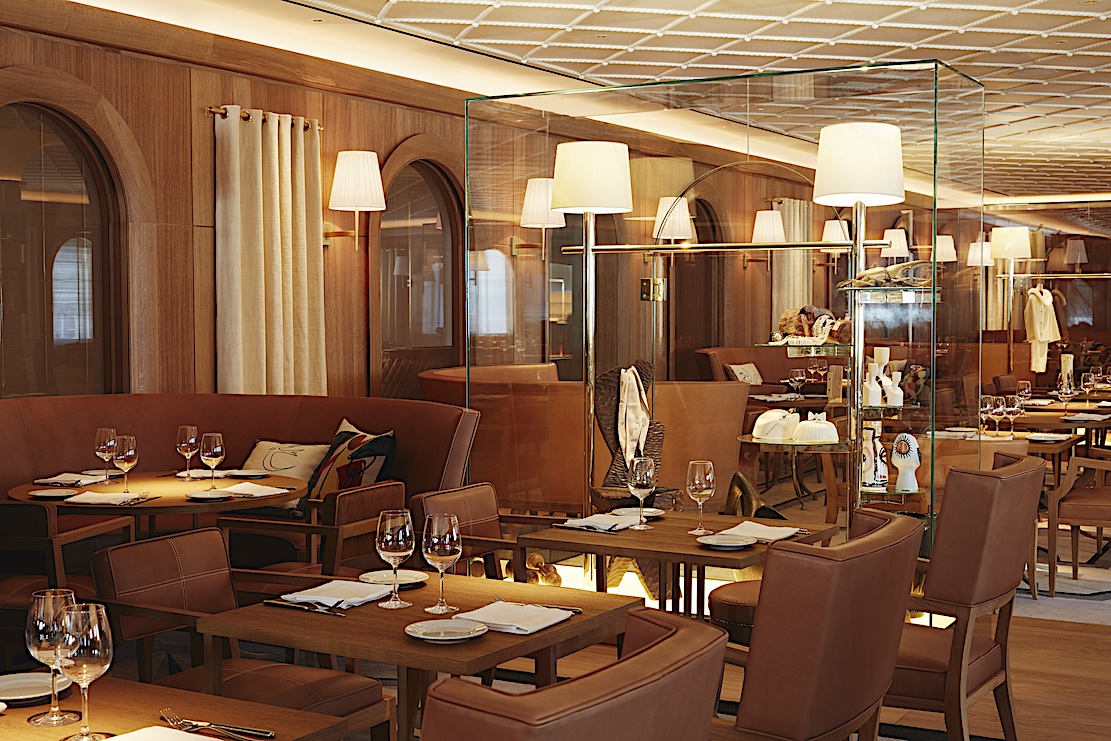 L’Avenue at Saks
L’Avenue at Saks
8 East 50th Street
212-940-4099
This
swank
dining salon is a 21st century
re-thinking of department store restaurants,
and it draws a young, fashionable crowd of
women who really dress up. The food is Asian
and French, like Dover
sole
“belle
meunière” or fresh morels lavished in a
bowl of cream-rich macaroni. Blanc de
poulet bio ($28) is succulent poached
chicken breast enhanced with curry seasonings
and sided with sweet chutney. There’s also a
lovely outdoor patio overlooking the city’s
midtown.
Tagmo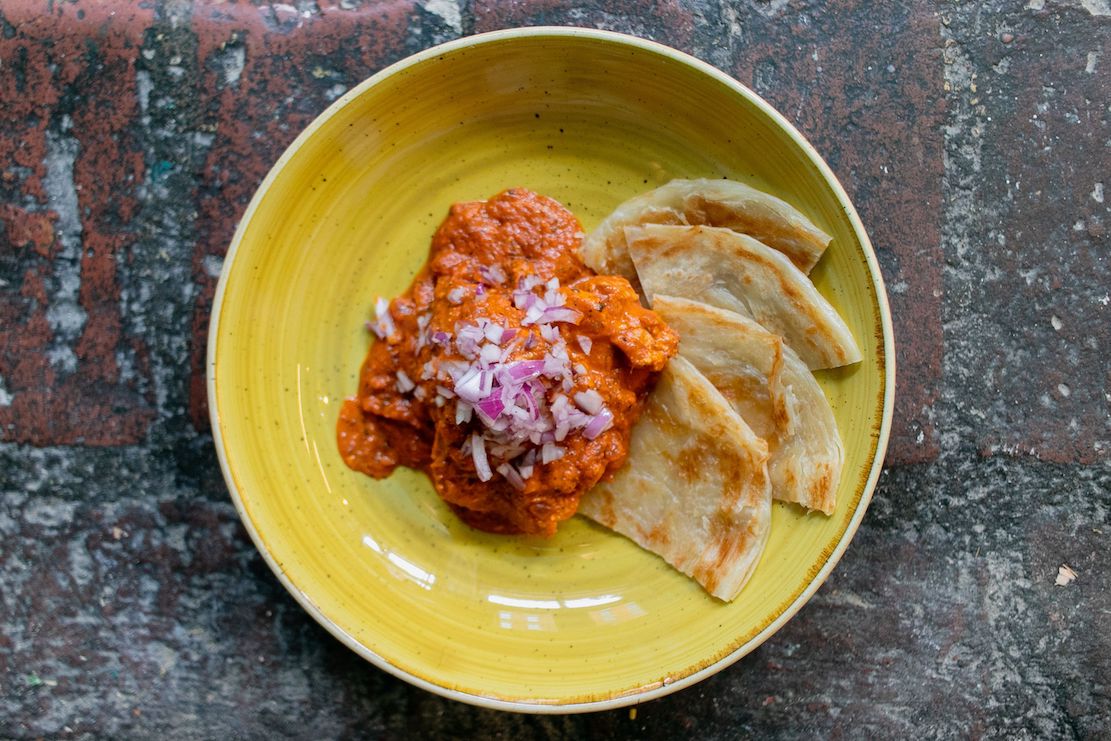
226 Front Street
212-285-2253
Tagmo (which in Bhutanese means
tigress, the symbol of female strength across
South Asia) is both chef Surbhi Sahni’s labor
of love and a commitment to employing women of
color, with a menu based on “regional
homestyle food and specialty sweets from
across India that tell our stories of
migration, cultural exchange and
self-determination in the diaspora.” It’s
innovative, beautifully presented and has
levels of spices that linger.
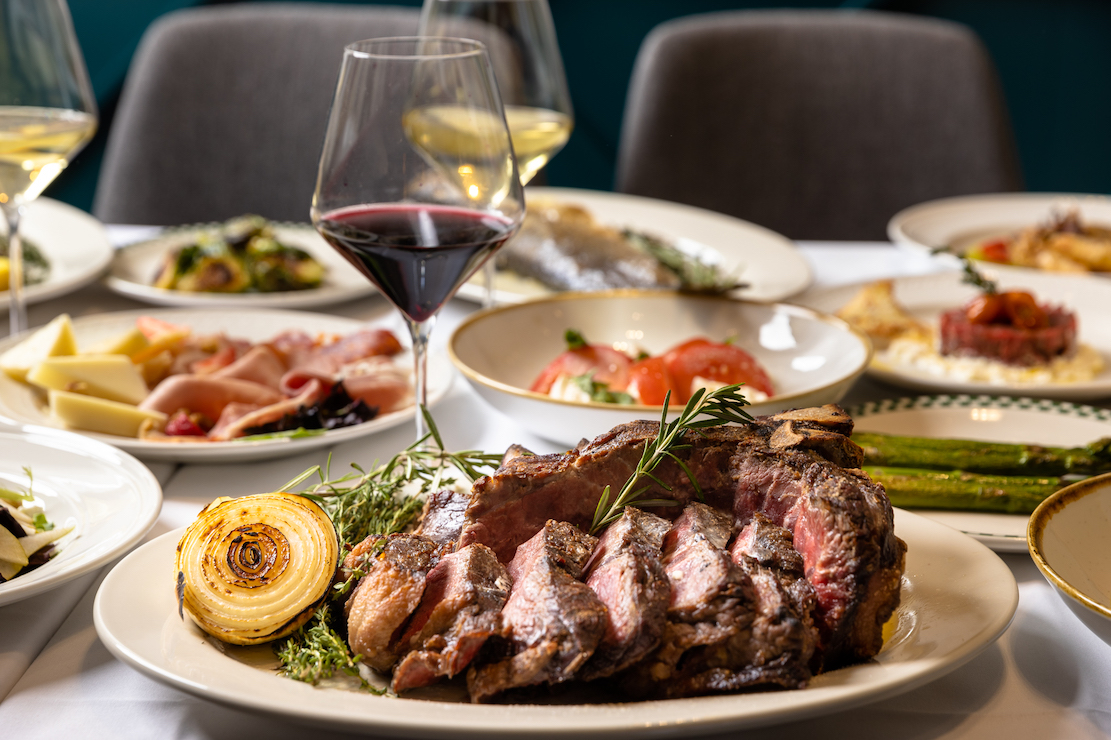 Ramerino Italian
Prime
Ramerino Italian
Prime
16 East 39th Street
929-837-0360
More
than
just another Italian steakhouse, Ramerino
Italian Prime is as proud of its Roman cacio e
pepe, pappardelle
with porcini mushrooms, truffle oil and goat’s
cheese and linguine with bottarga
($29). The steaks are outstanding and it’s a
civilized dining room with cordial service
staff.
Hancock
Street
257 Sixth Avenue
212-645-0193
On a cold winter’s night Hancock Street
(named after a long-gone street in the West
Village) provides a neighborly respite, with
an expanse of polished wood walls, velvet
curtains, a beautifully lighted bar, white
tablecloths and thin stemware. Order the
grilled Mediterranean branzino with grilled
artichoke hearts, preserved lemon vinaigrette
and a lovely tangy remoulade; roasted
Amish chicken with Brussels sprouts, onion and
truffle;
slightly smoked double pork chop with
butternut puree and a grain mustard jus.
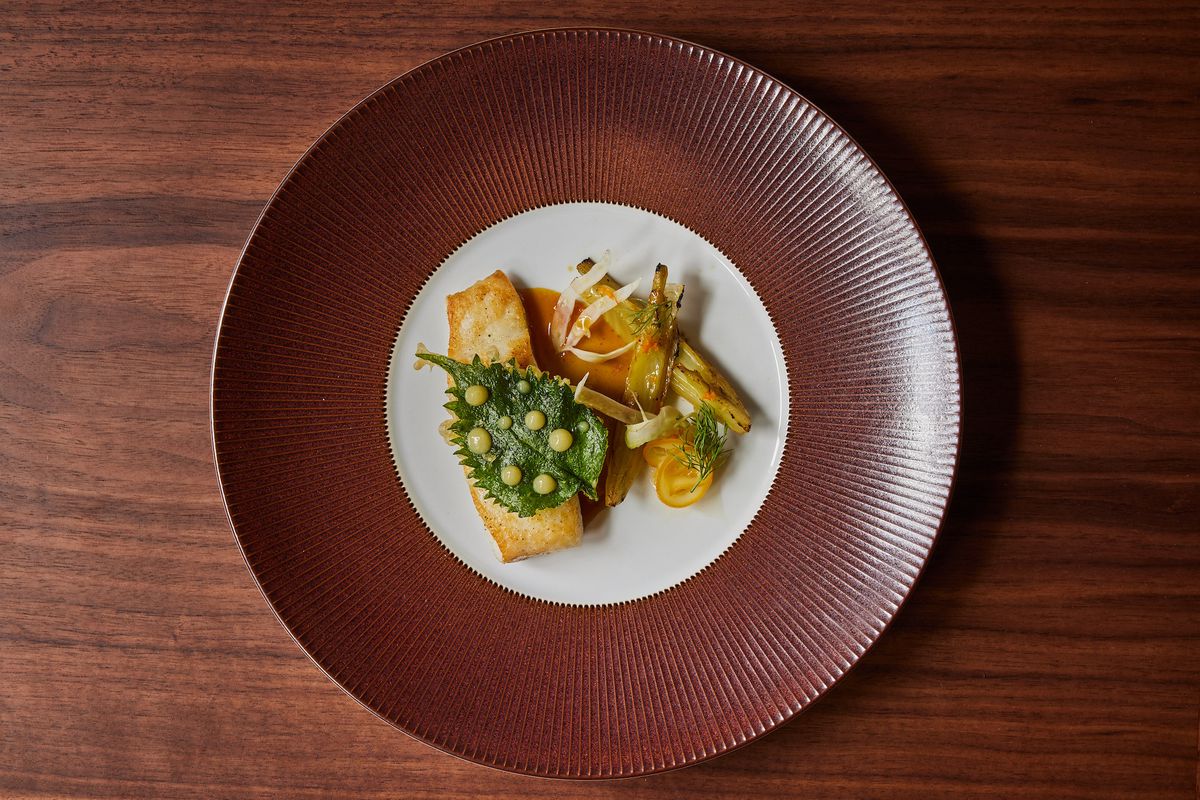 L’Abeille
L’Abeille
412
Greenwich Street
212-542-3898
Cucina 8 1/2
9 West 57th Street
212-829-0812
The
former Brasserie 8½ has always been one of New
York’s most fabulous dining rooms, with a
sweeping staircase and grand bar. Now it’s
been transformed into a smart space with
lusty, irresistible Italian fare like
meatballs with ricotta; crudi; cavatelli with
roast lamb; excellent pizzas; swordfish with
olive oil, salmoriglio and chili. Great and
very popular for parties and events.
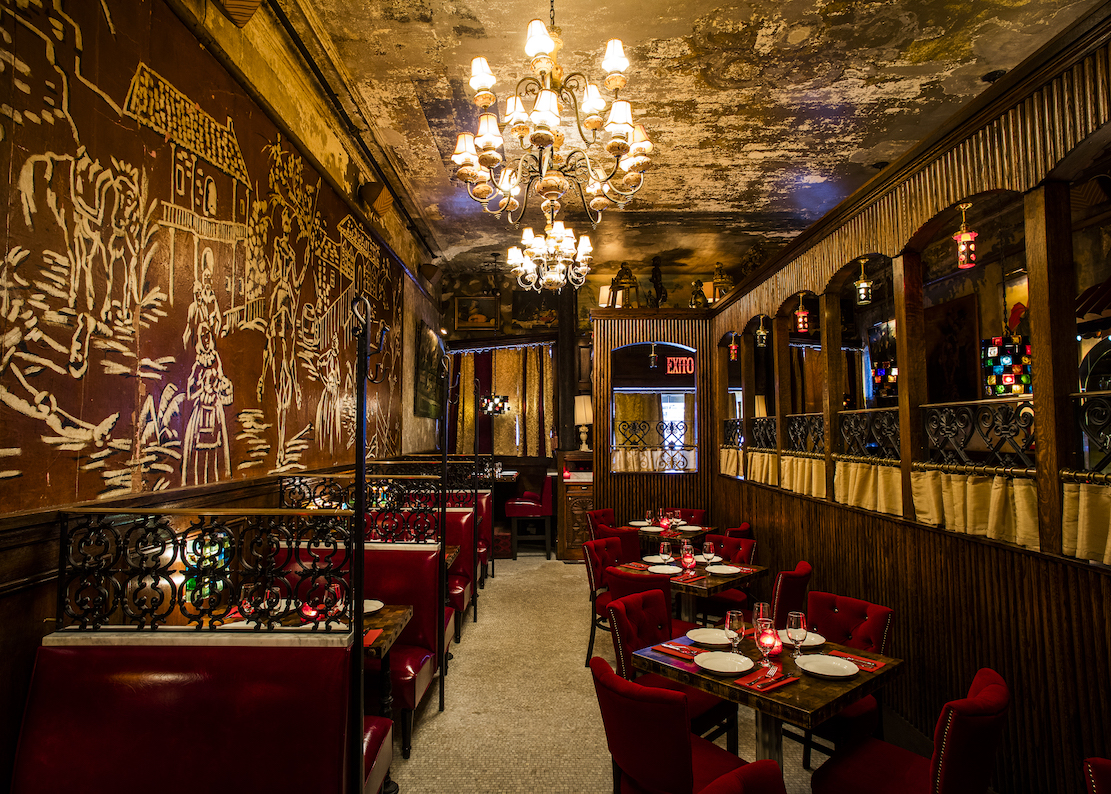 El Quijote
El Quijote
Hotel Chelsea
226 West 23rd Street
212-518-1843
Sunday Hospitality restaurant group and
partner Charles Seich have taken over and
re-booted this funky Hotel Chelsea
Spanish restaurant, now a hip place to
dine for everyone. Chef Byron Hogan and
culinary director Jaime Young set the kind of
menu you’d now find in Madrid, Bilbao and San
Sebastián, definitely not modernist but
solidly traditional, prepared with flair. Enjoy
gambas
al ajillo, fideuá
de
setas ($28) of
toasted and
baked angel hair spaghetti with marinated
mushrooms and piquillo peppers;
and, of course, terrific paella.
Sicily
Osteria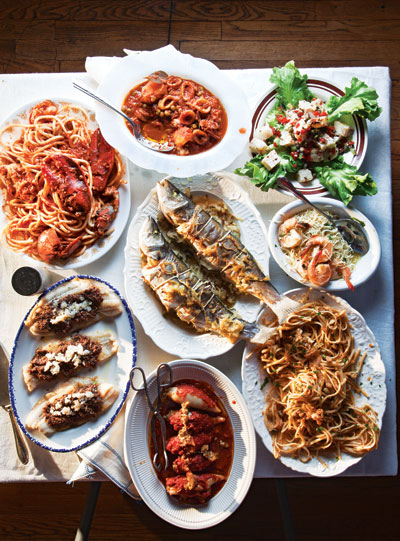
330 West 46th Street
646-609-3416
Not
only
is this the best new restaurant in the Theater
District, it is also the most authentic
Sicilian spot. The first category on the menu is
called “La Strada,” meaning foods of the
street, which includes wonderful little puffs
of pannelle
with lemon and fresh herbs that you will
gobble up; paccheri
alla Norma; Busiate
alla Trapanese ($18) has a sauce of
roasted tomato and an almond pesto, basil and
pecorino. It has a rustic atmosphere and very
ebullient service.
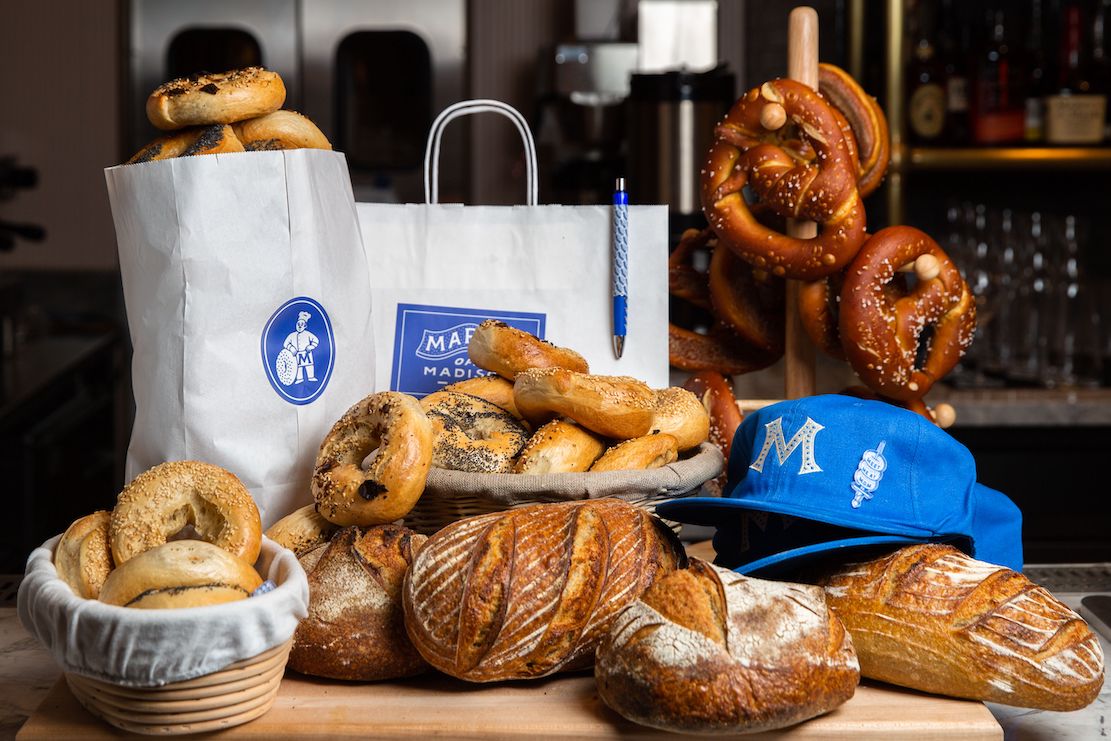 Mark’s
Off Madison
Mark’s
Off Madison
41 Madison Avenue
646-838-8300
Mark Strausman has never been one for
arduous tasting menus with teeny portions of
twee food, and at M.O.M. he clearly wants
everyone to order and eat with gusto, not
least a number of comfort foods from his own
Jewish-American heritage, in addition to
Italian dishes on which he made his
reputation. So you find crabcakes or softshell
crabs, as a starter or main course, Pollo
alla mattone roast chicken with lemon
and crushed red pepper; old-fashioned lemon
icebox cake with layered butter cookies, lemon
curd and whipped cream.
Jalao
NYC
2420 Amsterdam Avenue
929-688-4684
Located in the new Radio Hotel in
Washington Heights, Jalao NYC is a glamorous
Santo Domingo restaurant with dazzling, rich
colors everywhere, Carnival masks, a palm
motif, rattan and upholstered booths,
beautiful painted tables. A
lot of the food you will never have seen
before: chicharron y casaba of
amazingly crispy pork belly; bombones
de yuca filled with cheddar in a sauce
of pineapple and chipotle. Very tasty, juicy
goat’s meat-filled croquets are
served with an avocado spuma.
❖❖❖
ANOTHER VERMEER


After
the weekend’s rest, David was eager to call
his contacts to update them and to get
feedback. First call was to Gerry Kiley at
Interpol, who had kept track of the Vermeer
sale but didn’t know who’d bought the
painting.
“What’s your take?” he asked David.
“I don’t have one, except to say that
the number of bidders was very small and by
the end of it, the only bids coming in were by
phone.”
“Well, that was to be expected. We’ve
got our feelers out. But, frankly, the sale is
not—at least at the moment—part of our
investigation. We’re focused on Shui, who you
may have heard is under house arrest. We’ve
got no chips in the events that involved you
and Katie getting kidnapped, so I don’t know
how that’s proceeding.”
“So what’s going on with Shui?”
“The Taiwan courts are probably bending
over backwards not to go tough on him, and,
since Guanting and Guo are in Hong Kong
custody, Taiwan is going to have a tough time
proving he ordered a hit on you. They’re
going to call you to testify, of course. The
hotel gas leak is going to be difficult to
prove. And since Guanting and Guo can’t
testify, it’s not going to be an easy case to
win.”
“What about Interpol?”
“We’ve got the testimony of Chin about
the attempt to kill Lauden, but proving
intention to subvert the whole art auction
market is going to be tough for us to prove
unless Saito comes back from the dead and
Correia out of the Amazon forest.”
“So, you think Shui may go free of
everything?”
David remembered what his friend Bao
had said about moving on to the next case and
forgetting the last.
“Too early to tell,” said Kiley.
“Shui’s being hit from all sides. At the very
least he’s lost face, which in China is
tantamount to being banished from society and
shunned by all his business associates. The
Red Chinese are going to make a big deal about
this too, of course. Shui’s
reputation is going to plummet. He’ll be out
of power.”
“Well, Gerry,” said David, “I’m sure
you’re doing your best to nail his ass.”
“That we are. And, by the way,
apparently Shui has been quite ill, or so he
says. It may be his way of getting some sort
of lenience on the part of the court, but word
is he’s got doctors and nurses at his side
night and day.”
“I’d hate him to die peacefully in his
bed from the flu,” said David.
“No, it sounds more serious than that.
But, hey, we’ll just have to see how devious
Shui can be.”
*
*
*
*
Katie’s call to
Coleman was met with caution.
“John’s not here at the office,” said
his assistant Carol.
“Is he coming in this afternoon?”
“Uh, no, he won’t be coming back to Art Today.
He resigned over the weekend.”
Katie didn’t need to ask why, since
Interpol and possibly NYPD had already been in
contact with him, possibly even placed him
under arrest.
She tried his cell phone. No answer. No
recording.
Katie sat back in her chair, wondering
how to feel about her old friend, how he’d
betrayed her and his profession, and what he
must be going through at the moment.
Understanding Coleman wanting to make money
was one thing, but, maybe not with Coleman’s
knowledge, he’d become a possible accessory to
attempted murders. Forgive him she could not.
Pity him, maybe. In any case, it was a bitter
disappointment to her and by giving Coleman
that list of bidders, she felt she might, in
some way, have led her former friend farther
into Shui’s clutches.
That afternoon, going through her
notebooks—damn, she regretted losing her tape
recorder!—Katie started to doze off from the
vestiges of jetlag. Around
four
o’clock the phone rang.
“Katie? David.”
“Hey, what’s up?”
“Shui is dead.”
“What?
How’d it happen?”
“Kiley told me this morning he’d been
taken to the hospital after falling ill and
had round-the-clock nurses and doctors. Kiley
thought Shui might have been faking it to keep
out of house arrest and as a plea for
sympathy. But Kiley just got word that he died
in the middle of the night. Very fast.”
“Do they know why?”
“Not yet, but I wouldn’t put it past
Shui to commit suicide, would you?”
“Maybe not. Then again, his odds of
beating the charges sounded fair to good,
right?”
“That’s what Kiley thought. Now we’ll
never know.
He beat the rap by checking out
completely.”
“Will we get a report on why he died?”
“I’m sure we will. So many people are
involved in this case. Probably take a few
days. God knows, they never pinned down what
killed Saito.”
“Okay, well, keep me informed about
anything you here. Alan
Dobell is going to be all giddy about this.”
“I can’t say I’m unhappy Shui’s dead,
but I would have liked to see him stand
trial.”
“Yeah,” said Katie, “Dobell would have
liked that, too.”
“So,” said David, “stand by. This
story’s not over yet.”
“Not to mention trying to find out who
actually ended up buying the Vermeer for $90
million plus commission.”
“Maybe, with Shui out of the bidding,
Stepanossky, Danielides and Dorenbosch got
back in. Maybe Louden.”
“I’ll call him this week. I’ll let you
know what he says.”
“So, when we gonna get together again?”
“Anytime you want, David. I do
want to go over my notes with you to make sure
I’ve got the details right.”
David meant get together socially, but
he was happy to accept the offer. Without
wanting to sound too eager or disappointed, he
said, “Okay, just give me a call. I’m
always here.”
“Good, let’s check in tomorrow if
either of us hears anything.”
“Good plan,” said David. “Speak to you
then.”
*
*
*
*
A few days went by, Katie
continued to work on her notes, indexing them,
making links between all people involved.
David wasn’t doing much of anything, just
waiting to hear from Katie or one of his
contacts.
Then Kiley called.
“Correia’s back from his Amazon
vacation,” he said.
“Really? You mean he wasn’t actually
kidnapped?”
“Oh, no, he was. I was joking. He was
let out of a car in a town outside of Rio, his
family was alerted, and he was picked up, not
too much the worse for wear.”
“Did he say anything about his
kidnappers?”
“No one knows. The only info we have is
that he was released and the family isn’t
speaking to anyone. Either
they negotiated a ransom just in the last few
days or, with Shui dead, the kidnappers had no
more use for Correia. As far as everybody is
concerned, it never happened and the Rio
police know nothing about it.”
“So we may never find out the truth.”
“Probably not. It would have made a
good part of Katie’s story, though.”
“Oh, I’m sure she’ll bring it in some
way or another. Well, we’re getting pretty
close to the end of this case, aren’t we,
Gerry.”
“Pretty much. Loose ends, but with Shui
kaput, Interpol is pretty much out of it. I
understand Guanting and Guo pleaded guilty,
and without Shui, they’re of no use to the
Chinese, so they’re probably in some very
unsavory prison out in the boonies for the
rest of their lives.”
“Many happy returns to the little
fucks,” said David. “Well, it’s been terrific
working with you, Gerry. Maybe we will again
some time.”
“A year from now I’ll be like you. I’m
taking my pension, though I don’t think I’ll
be taking any extracurricular death-defying
jobs on the side. Maybe
some
nice safe consultant work for rich billionaire
collectors.”
“Are there any other kind?”
*
*
*
*
 It took ten days for the
autopsy to come back on Hai Shui, and this
time David’s NYPD friend Bobby Bao was only
too happy to get the results from the Taiwan
Police and to call David immediately.
It took ten days for the
autopsy to come back on Hai Shui, and this
time David’s NYPD friend Bobby Bao was only
too happy to get the results from the Taiwan
Police and to call David immediately.
“Well, Shui was poisoned, all right,”
said Bao.
“No shit,” said David. “Arsenic?”
Bao laughed. “Nothing so pedestrian or
old-fashioned. It was something called
polonium, called Po for short.”
“What’s polonium?”
“I’d never heard of it either, but it
works fast and is brutally lethal. It seems to
be a highly radioactive chemical and only
takes a pin prick to kill you off by radiation
poisoning. I’m told it’s a very agonizing way
to go.”
“Do the Taiwan Police know how it
happened?”
“Not a clue, but their forensics guys
say all an assassin would need would be just
to brush up against Shui with a touch of the
stuff and he was going to die fast.”
“Any reason to believe the Red Chinese
pulled it off?”
“No, but I’ve checked with my contacts
in the CIA and they tell me if anyone was
going to use Po it was probably the Russians.”
“Stepanossky,” said David. “Freaking
Stepanossky, getting back at Shui for trying
to blow him to smithereens.”
“The thought had occurred to me,” said
Bao.
“With no way in hell to trace it back
to Stepanossky, our former K.G.B. agent.”
“Hard to imagine.”
“Well, this case is just getting tidier
and tidier,” said David. “Wait till I tell
Katie and Gerry Kiley.”
“You owe me dinner.”
“I’ll cook.”
“No, dinner in town. Le Périgord. You
liked the place. You still got an expense
account?”
“Couple of bucks left, I guess,” said
David. “Okay, you got yourself a dinner. And,
hey, I really do appreciate the call, BB.
Everything’s falling into place.”
© John Mariani, 2016
❖❖❖
Wines
for the Christmas Table
By John Mariani
Unlike
Thanksgiving, when most Americans have a turkey
dinner that requires a bit of thought as to what
wine will best complement the meal’s flavors,
Christmas dinners are far more varied. While turkey
may well make another appearance, a standing rib
roast is traditional, goose is a true treat and on
Christmas Eve, Italian-Americans may celebrate La Vigilia
(The Vigil), when seven seafood dishes are served
(the number has many associations with
Christianity). Given that variety, the wines chosen
can be just as diverse, although many people will be
a bit more liberal in their expenditure for finer
bottles than usual. Here is a slew of wines I’ve
matched to various dishes on America’s Christmas
tables.
TURKEY
with savory and sweet side dishes
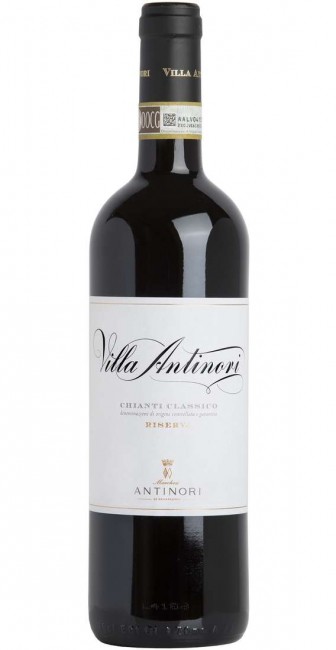 Villa Antinori Chianti Classico
Riserva 2019 ($35)—Antinori
has
been making Chiantis for as long as the Tuscan
appellation has existed, and its Riserva has
a bigger body and mintiness that makes it so versatile
with turkey or game birds. People who have forgotten
the consistent charm of Chianti Classico will be
reminded of how versatile a wine it really is.
Villa Antinori Chianti Classico
Riserva 2019 ($35)—Antinori
has
been making Chiantis for as long as the Tuscan
appellation has existed, and its Riserva has
a bigger body and mintiness that makes it so versatile
with turkey or game birds. People who have forgotten
the consistent charm of Chianti Classico will be
reminded of how versatile a wine it really is.
Beronia
Crianza 2018 ($15)—A
delicious Rioja Crianza style made from 96%
Tempranillo, 3% Garnacha and 1% Mazuelo. Slight oaky
notes complement the spice tones and long finish, and
it marries well with sweet condiments. Great price,
too, if you’re having a crowd over.
Carlo Alfieri Barbera
d’Asti Superiore 2015 ($28)—Few ever expected
Barbera Asti to receive a DOCG appellation like its
more prestigious sibling Piemontese Barolo and
Barbaresco, but this well-aged example deserves the
honor. Only 1,750 bottles of this wine were made by
enologist Mario Olivero, after a perfect summer of
weather to build up the polyphenolics. You could
drink it just with roasted chestnuts and be very
happy.
Cattleya Cuvée
Number One Pinot Noir 2021, Russian River
Valley ($65) and Cattleya 2021
Cuvée Number Eight Pinot Noir, Sonoma Coast
($65)—Yes, these are young Pinot Noirs, sourced from
a variety of Sonoma County vineyards, but for that
they have a very pleasing middle-bodied freshness that
will go well with dressing and winter spices.
Lynmar Estate Quail
Hill Pinot Noir 2018 ($71)—California Pinot
Noir styles vary widely, and it is telling that the
Russian River Valley’s Lynmar Estate has had 40 years
to focus its own style, based on 17 distinct blocks
planted with 14 dry-farmed Pinot Noir clones and four
Chardonnay clones, all individually fermented then
blended by Director of Winemaking and Vineyards Pete
Soergel. There’s elegance and finesse here, which
binds well to turkey and game, and would be just as
wonderful with a whole bowl of buttered mashed
potatoes.
ROAST
BEEF OR LAMB
Li Veli
“Orion” Primitivo Salento 2021 ($15)—Located
halfway
between the Adriatic Sea and the Ionian Sea, in the
Salento region of Puglia, the estate enjoys a cooler
climate than some other Puglian estates. Li Veli’s
Primitivo (a variant of Zinfandel) avoids the
overpowering, dark style the grape can produce in
favor of a fruit-forward example that, at $15, ![]() is
easy to drink throughout a meal of hearty components.
is
easy to drink throughout a meal of hearty components.
Ron Rubin
Winery Pam's UN-Oaked Pam Cabernet Sauvignon 2021
($16)—Made as a tribute to Ron Rubin’s wife Pam, this
wine goes against the California infatuation with
making oak a significant flavor component. Un-oaked,
more of the grape’s essential flavors and acid comes
through, with a little sweetness left, and at 12.5%
alcohol and at $16, it is easy drinking for a long
dinner.
To Kalon
Highest Beauty 2019 ($200)—If
you’re going to splurge for guests who will appreciate
the wine, this is a powerful 100% Cabernet Sauvignon,
whose tannins are already softening. The alcohol is
very high at 15.2%, but roast beef’s fatty richness
will gain in the match. To Kalon Vineyard Company,
which was founded 150 years ago, also makes a H.W.C 2019
($250), with slightly less alcohol, from vines originally
planted by Robert Mondavi in the 1960s.
Bertani
Valpolicella Ripasso 2017 ($26)—The
richer flavors and bigger body a Ripasso has, in
contrast to simple Valpolicella, are evident in this
example from one of the Veneto’s most distinguished
estates. A blend of 80% Corvina Veronese, 15%
Rondinella and 5% Merlot, with a lovely 13.5% alcohol,
it is just shy of the robustness of an Amarone, at a
lower price. Ideal with beef or lamb, as it would be
in the Veneto this time of year.
 CHRISTMAS EVE
SEAFOOD
CHRISTMAS EVE
SEAFOOD
Clay
Shannon Chardonnay 2020 ($30)—Clay
Shannon started planting in 1996
in California’s mountainous Lake County, with over
2,000 acres, 1,000 of which use a regenerative organic
farming system that greatly reduces environmental
impact. This wine is a blend of
Chardonnay from both High Valley and Red Hills grapes
and its depth of flavor is a fine accompaniment to
shellfish and strong flavors like anchovies.
FEL Savoy
Vineyard Chardonnay 2020 ($52)—At
this price for a Stags Leap district Chardonnay, you
expect a fuller body and California’s sun provides the
ripeness and 35% new oak a modest edge that goes with
the sensible 13.8% alcohol. Lobster, especially fra diavolo
style, would be wonderful with this wine. The vintage
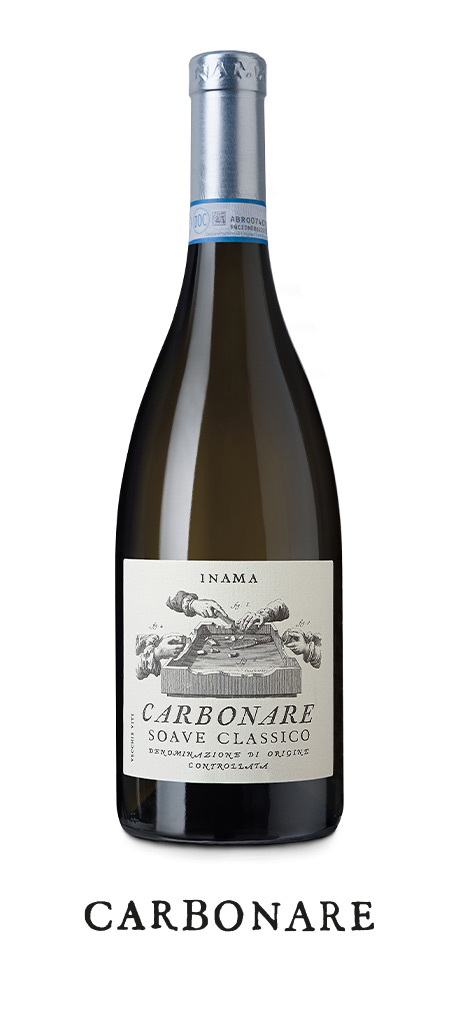 enjoyed an excellent climate in
Anderson Valley.
enjoyed an excellent climate in
Anderson Valley.
Hat Strap
Chardonnay Carneros ($25). Another fine match
with fleshy fish like Dover sole or halibut, this is
sourced from the Cline family’s J. Poppe vineyard, the
oldest Sonoma vineyard on the winery’s estate on
Wildcat Mountain.
Says Fred Cline, “Winds come up from the San
Pablo Bay, directly pulling in cooler coastal air. The
wind is so strong that I need to hang on to my hat
when inspecting the vineyard.” Hence the
wine’s name.
Inama “Carbonare”
Soave Classico 2020 ($30); La Valentina
Pecorino Colline Pescaresi 2021 ($18);
Russiz
Superiore Sauvignon Collio 2021 ($31); Garofoli Supèra
Verdicchio Di Matelica 2021 ($16)—Importer
Dalla Terra brings in all these unusual Italian white
wines, each superior to the run-of-the-mill examples
that have kept the varietals from gaining a better
reputation. Each is distinctive but all are very good
accompaniments to all kinds of seafood, especially a
dish like langoustines in garlic and oil or blue crabs
cooked with Old Bay Seasoning.
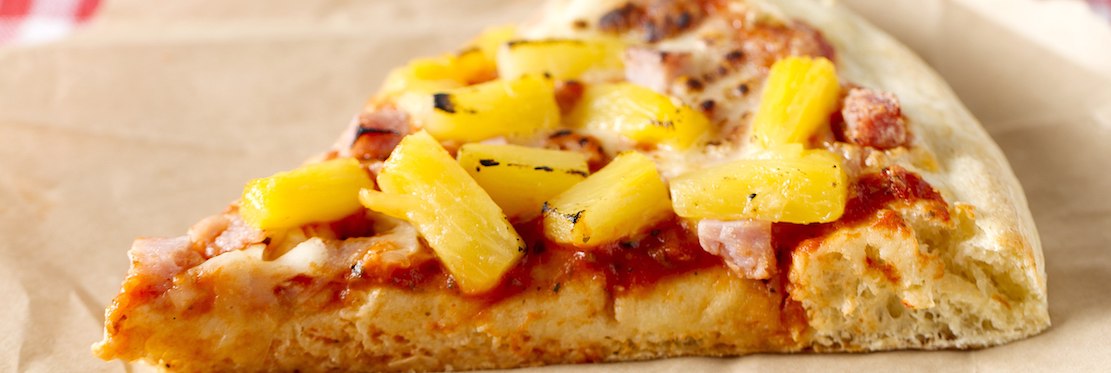 AND
DON'T FORGET THE YUMMY PINEAPPLE-HAM PIZZA AT
CALIFORNIA GRILL!
AND
DON'T FORGET THE YUMMY PINEAPPLE-HAM PIZZA AT
CALIFORNIA GRILL!"The
sublime
utility of sparkling wine culminates for me in the
winter, when I buy a case of one of my favorite
German sparklers: Dr. Becker Rheinhessen Scheurebe
Sekt Extra Trocken ($25), aka Dr. Becker. Then I get
fried chicken from Popeyes, fries from McDonald’s
(because they’re better), and some caviar (because
I’m not a barbarian). This party beats most
Thanksgivings. "—
Kevin Sintumuang "It's Time to Drink
Champagne Like You Drink Beer," Esquire (Dec
8, 2022).
❖❖❖
Any of John Mariani's books below may be ordered from amazon.com.
 The Hound in Heaven
(21st Century Lion Books) is a novella, and
for anyone who loves dogs, Christmas, romance,
inspiration, even the supernatural, I hope you'll find
this to be a treasured favorite. The story
concerns how, after a New England teacher, his wife and
their two daughters adopt a stray puppy found in their
barn in northern Maine, their lives seem full of promise.
But when tragedy strikes, their wonderful dog Lazarus and
the spirit of Christmas are the only things that may bring
his master back from the edge of despair.
The Hound in Heaven
(21st Century Lion Books) is a novella, and
for anyone who loves dogs, Christmas, romance,
inspiration, even the supernatural, I hope you'll find
this to be a treasured favorite. The story
concerns how, after a New England teacher, his wife and
their two daughters adopt a stray puppy found in their
barn in northern Maine, their lives seem full of promise.
But when tragedy strikes, their wonderful dog Lazarus and
the spirit of Christmas are the only things that may bring
his master back from the edge of despair. WATCH THE VIDEO!
“What a huge surprise turn this story took! I was completely stunned! I truly enjoyed this book and its message.” – Actress Ali MacGraw
“He had me at Page One. The amount of heart, human insight, soul searching, and deft literary strength that John Mariani pours into this airtight novella is vertigo-inducing. Perhaps ‘wow’ would be the best comment.” – James Dalessandro, author of Bohemian Heart and 1906.
“John Mariani’s Hound in Heaven starts with a well-painted portrayal of an American family, along with the requisite dog. A surprise event flips the action of the novel and captures us for a voyage leading to a hopeful and heart-warming message. A page turning, one sitting read, it’s the perfect antidote for the winter and promotion of holiday celebration.” – Ann Pearlman, author of The Christmas Cookie Club and A Gift for my Sister.
“John Mariani’s concise, achingly beautiful novella pulls a literary rabbit out of a hat – a mash-up of the cosmic and the intimate, the tragic and the heart-warming – a Christmas tale for all ages, and all faiths. Read it to your children, read it to yourself… but read it. Early and often. Highly recommended.” – Jay Bonansinga, New York Times bestselling author of Pinkerton’s War, The Sinking of The Eastland, and The Walking Dead: The Road To Woodbury.
“Amazing things happen when you open your heart to an animal. The Hound in Heaven delivers a powerful story of healing that is forged in the spiritual relationship between a man and his best friend. The book brings a message of hope that can enrich our images of family, love, and loss.” – Dr. Barbara Royal, author of The Royal Treatment.
 |
The Encyclopedia of American Food and Drink by John F. Mariani (Bloomsbury USA, $35) Modesty forbids me to praise my own new book, but let me proudly say that it is an extensive revision of the 4th edition that appeared more than a decade ago, before locavores, molecular cuisine, modernist cuisine, the Food Network and so much more, now included. Word origins have been completely updated, as have per capita consumption and production stats. Most important, for the first time since publication in the 1980s, the book includes more than 100 biographies of Americans who have changed the way we cook, eat and drink -- from Fannie Farmer and Julia Child to Robert Mondavi and Thomas Keller. "This book is amazing! It has entries for everything from `abalone' to `zwieback,' plus more than 500 recipes for classic American dishes and drinks."--Devra First, The Boston Globe. "Much needed in any kitchen library."--Bon Appetit. |
"Eating Italian will never be the same after reading John Mariani's entertaining and savory gastronomical history of the cuisine of Italy and how it won over appetites worldwide. . . . This book is such a tasteful narrative that it will literally make you hungry for Italian food and arouse your appetite for gastronomical history."--Don Oldenburg, USA Today. "Italian
restaurants--some good, some glitzy--far
outnumber their French rivals. Many of
these establishments are zestfully described
in How Italian Food Conquered the World, an
entertaining and fact-filled chronicle by
food-and-wine correspondent John F.
Mariani."--Aram Bakshian Jr., Wall Street
Journal.
"Equal parts
history, sociology, gastronomy, and just
plain fun, How Italian Food Conquered the
World tells the captivating and delicious
story of the (let's face it) everybody's
favorite cuisine with clarity, verve and
more than one surprise."--Colman Andrews,
editorial director of The Daily
Meal.com. "A fantastic and fascinating
read, covering everything from the influence
of Venice's spice trade to the impact of
Italian immigrants in America and the
evolution of alta cucina. This book will
serve as a terrific resource to anyone
interested in the real story of Italian
food."--Mary Ann Esposito, host of PBS-TV's
Ciao
Italia. "John Mariani has written the
definitive history of how Italians won their
way into our hearts, minds, and
stomachs. It's a story of pleasure over
pomp and taste over technique."--Danny Meyer,
owner of NYC restaurants Union Square
Cafe, The Modern, and Maialino.
|
 |
 |
 |
 |
 |
 |
 Everett Potter's Travel Report:
Everett Potter's Travel Report: 
 Eating Las
Vegas
Eating Las
Vegas
MARIANI'S VIRTUAL GOURMET
NEWSLETTER is published weekly. Publisher: John Mariani. Editor: Walter Bagley. Contributing Writers: Christopher
Mariani, Misha Mariani, John A. Curtas, Gerry Dawes, Geoff Kalish.
Contributing
Photographer: Galina Dargery. Technical
Advisor: Gerry
McLoughlin.
If you wish to subscribe to this
newsletter, please click here: http://www.johnmariani.com/subscribe/index.html
© copyright John Mariani 2022
